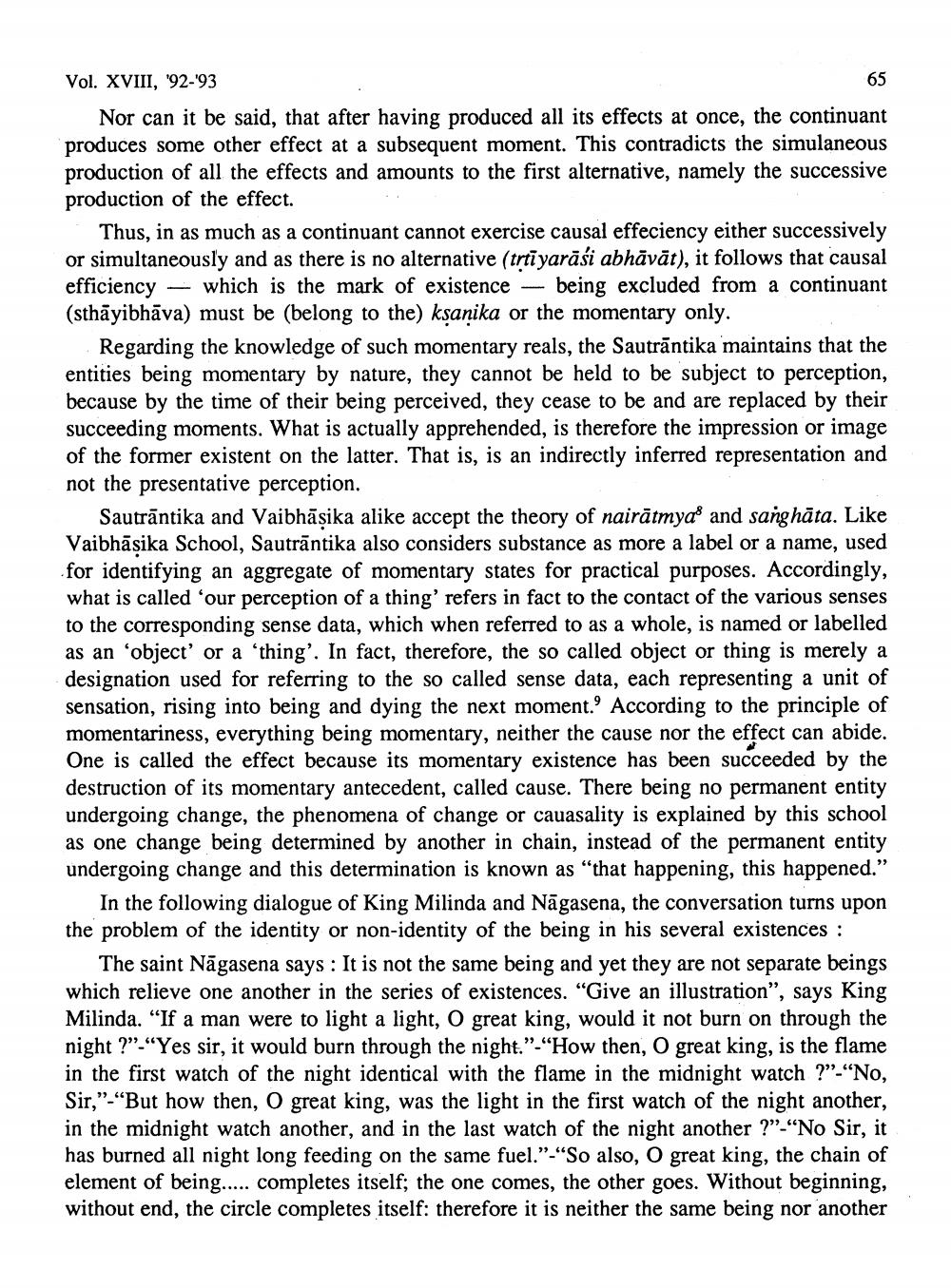________________
65
Vol. XVIII, '92-'93
Nor can it be said, that after having produced all its effects at once, the continuant produces some other effect at a subsequent moment. This contradicts the simulaneous production of all the effects and amounts to the first alternative, namely the successive production of the effect.
Thus, in as much as a continuant cannot exercise causal effeciency either successively or simultaneously and as there is no alternative (trtiyarāśi abhāvāt), it follows that causal efficiency – which is the mark of existence - being excluded from a continuant (sthāyibhāva) must be (belong to the) kșanika or the momentary only.
Regarding the knowledge of such momentary reals, the Sautrāntika maintains that the entities being momentary by nature, they cannot be held to be subject to perception, because by the time of their being perceived, they cease to be and are replaced by their succeeding moments. What is actually apprehended, is therefore the impression or image of the former existent on the latter. That is, is an indirectly inferred representation and not the presentative perception.
Sautrāntika and Vaibhāsika alike accept the theory of nairātmya and sanghāta. Like Vaibhāsika School, Sautrāntika also considers substance as more a label or a name, used for identifying an aggregate of momentary states for practical purposes. Accordingly, what is called 'our perception of a thing' refers in fact to the contact of the various senses to the corresponding sense data, which when referred to as a whole, is named or labelled as an 'object' or a 'thing'. In fact, therefore, the so called object or thing is merely a designation used for referring to the so called sense data, each representing a unit of sensation, rising into being and dying the next moment.' According to the principle of momentariness, everything being momentary, neither the cause nor the effect can abide. One is called the effect because its momentary existence has been succeeded by the destruction of its momentary antecedent, called cause. There being no permanent entity undergoing change, the phenomena of change or cauasality is explained by this school as one change being determined by another in chain, instead of the permanent entity undergoing change and this determination is known as “that happening, this happened.”
In the following dialogue of King Milinda and Nāgasena, the conversation turns upon the problem of the identity or non-identity of the being in his several existences :
The saint Nāgasena says: It is not the same being and yet they are not separate beings which relieve one another in the series of existences. "Give an illustration”, says King Milinda. "If a man were to light a light, O great king, would it not burn on through the night ?”.“Yes sir, it would burn through the night.”-“How then, O great king, is the flame in the first watch of the night identical with the flame in the midnight watch?"-"No, Sir,”-“But how then, O great king, was the light in the first watch of the night another, in the midnight watch another, and in the last watch of the night another ?"-"No Sir, it has burned all night long feeding on the same fuel.” -“So also, O great king, the chain of element of being.... completes itself; the one comes, the other goes. Without beginning, without end, the circle completes itself: therefore it is neither the same being nor another




